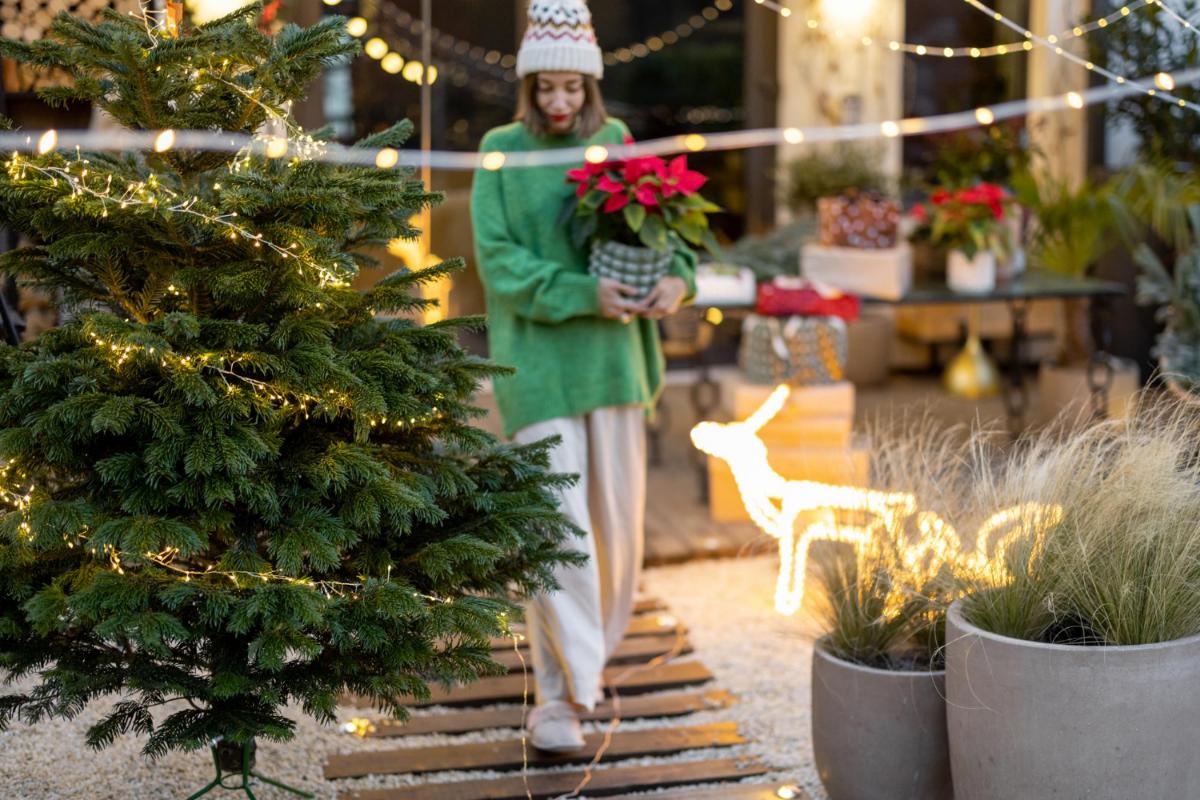Christmas and Holiday Season Fire Safety Statistics and Tips

Merry Christmas and Happy Holidays from our entire family at Spectrum Electric Inc., an electrical service in Orlando. We wish the very best for you and yours this holiday season. We'd like to take a moment to sincerely thank all of our customers, both past and present, for their business. You are the reason we do what we do, so "thank you" from the bottom of our hearts!
As Christmas approaches, Americans are expected to spend a little over $20 billion this year on Christmas trees and Christmas decorations. We typically decorate the interior and exterior of our homes with lights, Christmas trees, candles and numerous other festive decorations to celebrate the holiday season. Who doesn't love driving the children through the neighborhood to take in the beauty of the variety of lighting and decorative displays that can be seen this time of year? It's a wonderful tradition that really gets us in the spirit to celebrate the holidays however we celebrate them. It's extremely important, though, to be mindful of the risks of electrical fires associated with Christmas decorations. It's therefore equally important to do everything we can to make sure we're all as safe as possible this holiday season.
Let's start with some statistics from the Electrical Safety Foundation International and the National Fire Protection Association:
- In 2004-2008, an estimated 1,170 home fires per year began with decorations, excluding Christmas trees. These fires caused an annual average of 8 deaths, 54 injuries, and $19.1 million in property damage.
- Christmas tree and holiday decoration fires result in twice the injuries and 5 times more fatalities per fire than the average winter holiday fire.
- On average, 260 home fires begin with Christmas trees each year, resulting in 12 deaths, 24 injuries and $16.4 million in property damage.
- One of every three home Christmas tree fires are caused by electrical problems.
- Although Christmas tree fires are not common, when they do occur, they are more likely to be serious. On average, one of every 40 reported home structure Christmas tree fires results in a death compared to an average of one death per 142 total reported home structure fires.
- A heat source too close to the tree causes roughly one in every six of Christmas tree fires.
- An additional 150 home fires per year begin with holiday lights and other decorative lighting, causing another 8 deaths, 16 injuries, and $8.9 million in property damage each year.
- Candles started 45% of home decoration fires.
- December is the peak time of year for home candle fires. In December, 11% of home candle fires began with decorations compared to 4% the rest of the year.
- Christmas, Christmas Eve, and New Year’s Day are the top 3 days of the year for candle fires.
- More than half (56%) of home candle fires occur when something that can catch on fire is too close to the candle.
- Roughly 5,800 people per year were treated in hospital emergency rooms for falls associated with holiday decorations. More than half of these injuries were caused by falls from ladders or roofs while decorating outdoors.
- CPSC estimates that each year, about 4,000 injuries associated with electric extension cords are treated in hospital emergency rooms. 50% of these injuries involve fractures, lacerations, contusions, or sprains from people tripping over extension cords. 13% of these injuries involve children less than five years of age; electrical burns to the mouth accounted for 50% of the injuries to young children.
As can be seen from the above, our holiday decorations pose a significant risk every year, whether through the risk of electrical fires or other dangers associated with the act of decorating or the decorations themselves. With Americans spending so much money on Christmas decorations, these dangers will only continue to increase. With some basic safety measures in place, you can ensure that you're as safe as possible this holiday season
Let's look at some of the ways you can improve the safety of your family and property and reduce the risks associated with holiday decorating:
- Connect no more than 3 strands of mini light sets together, plugged into the same power outlet.
- Make certain no more than 50 bulbs are used simultaneously in screw-in light bulb sets.
- Make sure your Christmas tree is at least 3 feet away from any heat source, including space heaters, radiators, fireplaces, candles and even heat vents.
- Keep candles at least 12 feet away from anything that is flammable.
- Consider using electrical candles instead of flame-producing candles.
- Keep your tree well-watered. Dry trees account for the vast majority of Christmas tree fires.
- Get rid of your Christmas tree after Christmas or when it is dry.
- Use the right type of extension cord. Two-wire extension cords are usually fine for indoor lights, but be certain to use a three-wire, grounded extension cord for any outdoor light display.
- Do not overload outlets by using mutiple-plug adapters.
- Check for damage or deterioration to any extension cords and discard if any damage or deterioration is evident.
- Do not connect extension cords together for longer runs. It is safer to use a single cord of the correct length.
- Always turn off festive decorations, both indoor and outdoor, when you leave the house or go to bed.
- As always, instruct your family on appropriate fire safety rules and procedures. Make sure you have fire escape routes planned throughout the home and that all family members are properly instructed in their use. Test your fire alarms weekly.
We hope that this article has been helpful and that everyone has a safe and happy holiday season. Check out the following video for an overview public service announcement:
Spectrum Electric is a top Central Florida electrical contractor. We handle any and all core electrical services, both residential and commercial.
